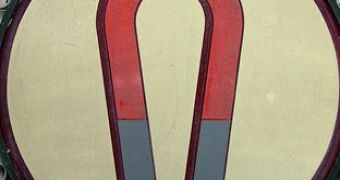A rare type of magnet that has a permanent magnetic field and that is also electrically polarized, is the latest creation of a team of scientists.
The idea of such a material was first theorized by Craig Fennie and Karin Rabe, from the School of Applied and Engineering Physics, at Cornell University, in 2006.
They said that in theory, the antiferromagnetic europium titanate (EuTiO3) should have both ferroelectric and ferromagnetic properties if grown as thin films on a substrate to induce a compressing strain on the material.
Now, a new team led by Darrell Schlom at Cornell University in Ithaca, have made several experiments to test this theory.
They proved that if EuTiO3 was grown at a thickness of around 20nm on a slightly mismatched dysprosium scandate (DyScO3) substrate, the crystal lattice increased by 1%, and enough strain was created for the material to acquire both ferromagnetic and ferroelectric properties, at a strength 1000 times higher than any other known multiferroic material.
Beatriz Noheda, a materials scientist at the University of Groningen in the Netherlands is very admiring of this achievement and says that it “is a magnificent example of theory-experiment collaboration in a field that is producing great results, [and even if] the current example only works at temperatures below 4K, it represents a great breakthrough because it shows that the theory works and that the materials can be grown.”
Even team member Venkatraman Gopalan, Professor of Materials Science and Engineering and Associate Director, of the Center for Optical Technologies at Pennsylvania State University says that watching an antiferromagentic material turning into a ferroelectric and ferromagnetic material simply by straining is rather incredible.
“Our work confirms a theory-driven new route to multiferroics where magnetically ordered insulators that are neither ferroelectric nor ferromagnetic are transformed into ferroelectric ferromagnets using a single control parameter of strain,” he adds.
The fact that the magnetism of this material can be controlled with electric fields can be very helpful for the next generation computer technology, explains Gopalan, because “in hard drives, you need magnetic fields to switch magnets, which is very power expensive.
“Ideally you would want to do everything with 5 volts like in the rest of your computer, and a material that is both ferroelectric and ferromagnetic can allow that,” he adds.
This is the world's strongest ferroelectric ferromagnet and it is opening the way to a new approach in domains like energy efficient computer memory, magnetic sensors and energy harvesting, RSC reports.

 14 DAY TRIAL //
14 DAY TRIAL //